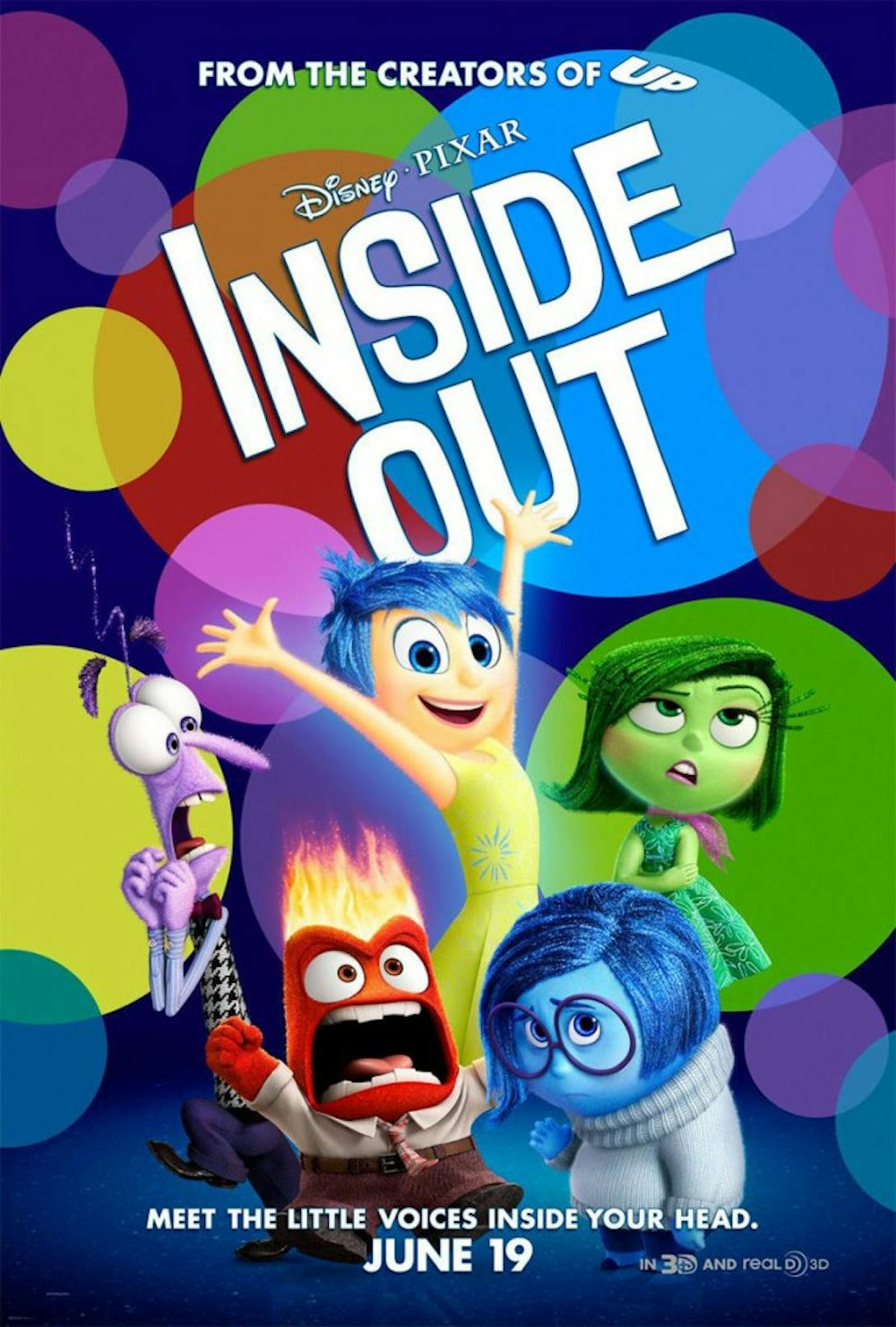Since its inception, Pixar has been making people laugh, cry and feel a whole other host of emotions with stories based around characters which are usually not even human. Their bouncing lamp’s distaste for the letter ‘I’ is a Pavlovian trigger for audiences to expect a film with the highest level of storytelling and production imaginable and practically guarantees at least one character with which the audience will be totally enamored in a few short hours. To do all of this with real people on screen would be an awesome accomplishment, and to do it with animated characters is a feat that is simply astounding. Pixar seems to repeatedly showcase just that with ease.
“Inside Out” is not only a proud continuance of this tradition, but a huge advancement of it as well. This incredible movie shares many of the hallmarks of its Pixarian predecessors such as tumultuous roller coasters of emotion, the trials of growing up and well-grounded exploration of self. But “Inside Out” does so much more as it depicts a topic infinitely more complex than what toys do when we’re not around or the life of bugs — emotions and thought processes. And it does so with ease. Written and directed by Pete Docter — a mastermind with credits to his name such as writing “Toy Story,” writing and directing “Monsters, Inc.” and most recently, writing and directing “Up” for which he won an Academy Award — “Inside Out” focuses on the inner workings of an 11 year-old girl named Riley’s mind. In the movie, a host of anthropomorphized emotions in the form of individually colored characters operate Riley’s mind.
The five emotions depicted are Joy, Sadness, Fear, Disgust, and Anger voiced by Amy Poehler, Phyllis Smith, Bill Hader, Mindy Kaling and Lewis Black, respectively. It is impossible to emphasize just how wonderful these actors are as the voices of these characters as each brings to the table exactly what is needed from their character and then some. This movie would be lacking without these performances and specifically Poehler’s, which manages to make what might be the most detestable character — the relentlessly upbeat and energetic Joy — a complete pleasure. Richard Kind fills out the cast as Riley’s old imaginary friend, Bing Bong, and provides a wonderful presence in the middle of the film as a central character with more than a single emotion.
The crux of the film is that Riley’s family has moved from Minnesota to San Francisco, and the changes that accompany the move are predictably hard. This and a delightful scene of serendipity based around Riley’s emotions’ desire to not let her experience sadness send Joy and Sadness on an odyssey across the depths of Riley’s mind to return to ‘Headquarters,’ the conscious mind, before all hell breaks loose while only Anger, Disgust, and Fear are left to run Riley’s life. Basically, this trio of emotions are what most adolescents remember as the onset of puberty.
What makes this movie truly great is the way it honestly pushes the boundaries of understanding how our own minds work. The creators of “Inside Out” worked with many psychologists to ensure the relative accuracy of what they were depicting, and the emotional lessons conveyed within the film are worthy ones for all ages. This movie blends fairly deep philosophy regarding thought, the change of oneself, interactions with others, memory and the mind as a whole together with an uproariously funny story and great set of characters. Pixar’s best movies (read: all their movies but “Cars 2”) have always been somewhat akin to a therapy session with a very happy comedian, and “Inside Out” is no different but is at the same time something new altogether.
The movie excels in areas Pixar is known for like the heartbreaking moments, Pete Docter’s specialty — he is the maestro who brought us the crushing opening minutes of “Up,” after all — but the film is more notable for where it leaves Pixar’s comfort zone. They took on an enormous task in explaining concepts like abstract thought and the subconscious in an animated movie. When Pixar accomplished it, in a brilliant and beautiful way no less, it was nothing short of miraculous.
The depth of the fences for which Pete Docter and company swung with the themes of “Inside Out” would have resulted in an easy pop fly with anything less than perfection at the plate. Fortunately for everyone, that was just what was up to bat. Docter’s direction, the superb cast, the always incredible production values of Pixar and the wonderfully well-written story make “Inside Out” a 600-foot home run that may just be Pixar’s best yet.







